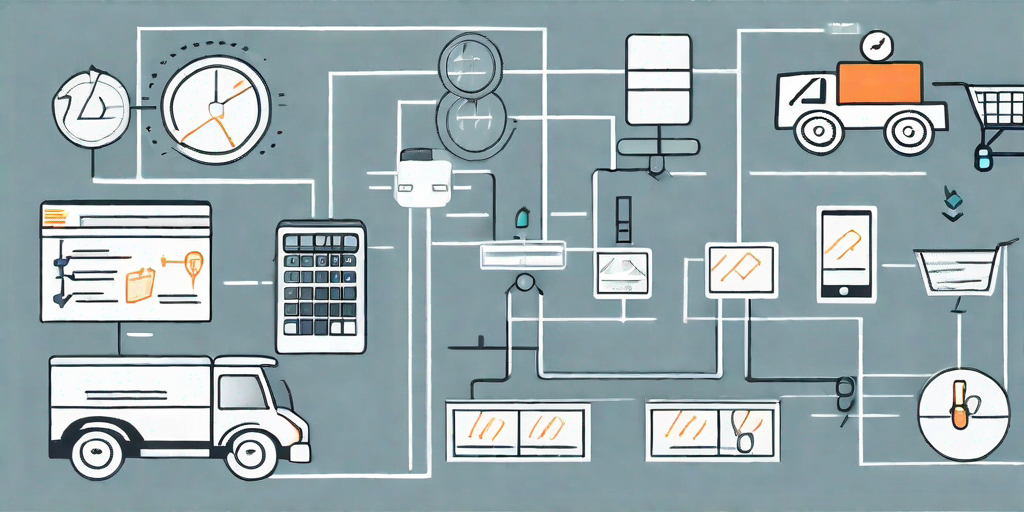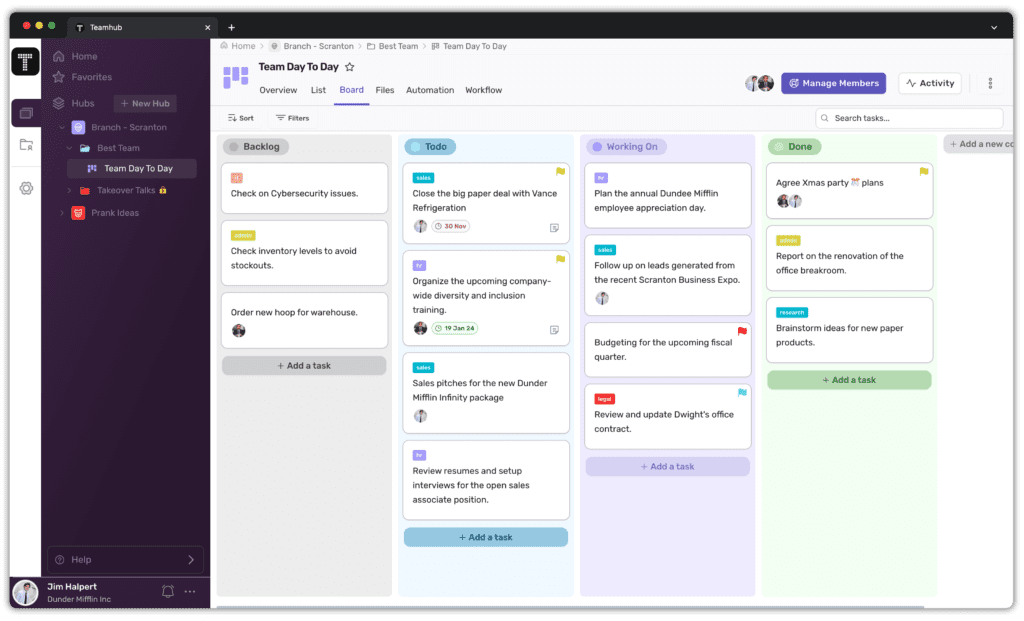LIMITED TIME OFFER
Replace all of these

with a single tool for just $1 per month for your entire team
UNLIMITED USERS
UNLIMITED PROJECTS
UNLIMITED CHATS
UNLIMITED DOCS
UNLIMITED STORAGE
AND MORE..
Total Procurement Cost Formulas Explained

In today’s competitive business landscape, understanding and effectively managing the total procurement cost is essential for organizations to stay ahead. Total procurement cost refers to the overall expenses incurred in acquiring goods and services from suppliers. It encompasses various factors and variables that businesses must consider to optimize their procurement process and ensure financial success. In this article, we will delve into the concept of total procurement cost, break down the formula to calculate it, explore the factors that influence it, discuss strategies to optimize it, and debunk common misconceptions surrounding it.

Understanding the Concept of Total Procurement Cost
Before diving into the intricacies of the total procurement cost formula, let’s first establish a clear understanding of what it entails. Total procurement cost encompasses not only the purchase price of goods and services but also all additional costs associated with acquiring them. It includes factors such as shipping expenses, customs duties, taxes, storage costs, and any other relevant expenses incurred in the procurement process. By considering these additional costs, businesses can gain a more accurate understanding of the true cost of procurement and make informed decisions to optimize their operations.
Quantity of goods or services being procured
When it comes to the purchase price, it is essential to consider various factors that can influence it. For instance, the quantity of goods or services being procured can impact the price negotiation process. Bulk purchases often come with discounts, allowing businesses to save money in the long run. Additionally, the quality of the products or services can also affect the purchase price. Higher quality items may come at a higher cost, but they can provide long-term benefits such as durability, reliability, and customer satisfaction.
Shipping expenses
Shipping expenses play a significant role in the total procurement cost. Depending on the origin and destination of the goods, transportation costs can vary greatly. Factors such as distance, mode of transportation (air, sea, land), and urgency of delivery can all impact the shipping expenses. It is crucial for businesses to consider these factors and choose the most cost-effective shipping options that meet their requirements.
Customs duties and taxes
Customs duties and taxes are additional costs that businesses need to account for when calculating the total procurement cost. When importing goods from other countries, customs duties are imposed by the government. These duties are based on the value of the goods and the applicable tariff rates. Similarly, taxes, such as value-added tax (VAT), may also apply to the procurement process. It is essential for businesses to understand the customs regulations and tax laws of the countries involved to avoid any unexpected costs.
Storage costs
Storage costs are another factor that contributes to the total procurement cost. Depending on the nature of the goods and the duration of storage, businesses may need to allocate resources for warehousing and inventory management. These costs include rent, utilities, labor, and any additional expenses related to maintaining a proper storage facility. By considering these costs, businesses can make informed decisions about the quantity and frequency of their procurement activities.
Definition of Total Procurement Cost
In simple terms, total procurement cost can be defined as the sum of the purchase price and all associated expenses incurred in the procurement process.
It is important to note that the definition of total procurement cost may vary depending on the industry and specific business requirements. Some organizations may include additional factors such as supplier relationship management costs, quality control expenses, and even the cost of managing procurement software and systems.
Unlock Efficiency with Teamhub

Importance of Total Procurement Cost in Business
Understanding the total procurement cost is crucial for businesses for several reasons. Firstly, it allows organizations to accurately evaluate and compare suppliers based on their overall cost rather than just the purchase price. By considering the total procurement cost, businesses can identify suppliers that offer the best value for money. This evaluation process involves not only the immediate costs but also the long-term benefits and risks associated with each supplier.
Secondly, it enables businesses to identify areas of cost savings and implement strategies to optimize their procurement process. By analyzing the various components of the total procurement cost, organizations can identify potential inefficiencies, bottlenecks, or areas where cost reduction is possible. This analysis can lead to process improvements, supplier negotiations, and the implementation of cost-saving measures such as bulk purchasing, centralized procurement, or the use of technology to streamline operations.
Finally, a comprehensive understanding of total procurement cost helps organizations to estimate their expenses accurately, enabling more effective budgeting and financial planning. By having a clear picture of the costs involved in the procurement process, businesses can allocate resources more efficiently and make informed decisions about investments, pricing strategies, and overall financial management.
In conclusion, total procurement cost is a critical concept that goes beyond the purchase price of goods and services. It encompasses various factors such as shipping expenses, customs duties, taxes, and storage costs. By considering these additional costs, businesses can gain a comprehensive understanding of the true cost of procurement and make informed decisions to optimize their operations. Understanding the total procurement cost allows organizations to evaluate suppliers effectively, identify areas of cost savings, and estimate expenses accurately for better financial planning.
Breaking Down the Total Procurement Cost Formula
Now that we have grasped the concept of total procurement cost, let’s explore the formula that enables organizations to calculate it accurately.
Understanding the components of the total procurement cost formula is crucial for businesses to make informed decisions. By considering all the factors involved, organizations can gain a comprehensive understanding of the true cost of procurement.
Components of the Total Procurement Cost Formula
The total procurement cost formula consists of several components that businesses need to consider:
- Purchase Price: This is the base cost of acquiring the goods or services from the supplier. It includes the negotiated price for the products or services.
- Shipping Expenses: These include any costs associated with transporting the goods to the business location. It encompasses various aspects such as freight charges, packaging costs, and transportation fees.
- Customs Duties and Taxes: If the goods are imported, businesses must account for any customs duties and taxes imposed. These charges are levied by the government and can significantly impact the total procurement cost.
- Storage Costs: These costs include warehousing expenses for storing the goods until they are utilized or sold. Factors such as rent, utilities, and inventory management systems contribute to the overall storage costs.
- Additional Fees: This component encompasses any other relevant expenses incurred during the procurement process, such as inspection costs or insurance fees. These fees are often overlooked but can add up to a significant amount.
- Supplier Risk: Organizations must also consider the risk associated with suppliers, such as product quality or reliability, which can impact the total procurement cost. Evaluating supplier risk involves conducting thorough due diligence and considering factors like past performance, reputation, and financial stability.

How to Calculate Total Procurement Cost
To calculate the total procurement cost, organizations need to sum up all these components:
Total Procurement Cost = Purchase Price + Shipping Expenses + Customs Duties and Taxes + Storage Costs + Additional Fees + Supplier Risk
By accurately calculating the total procurement cost, organizations can make well-informed decisions regarding their procurement strategies. It allows businesses to evaluate the true cost of acquiring goods or services and enables them to optimize their procurement processes for better cost management and efficiency.
Factors Influencing Total Procurement Cost
Multiple factors can influence the total procurement cost that businesses need to be aware of when calculating and managing it.
Role of Suppliers in Total Procurement Cost
Suppliers play a significant role in determining the total procurement cost. The reliability and efficiency of suppliers can impact shipping expenses, storage costs, and additional fees. Choosing reliable suppliers with competitive pricing and efficient logistics can help businesses reduce the overall procurement cost and enhance their operational efficiency.
Impact of Market Conditions on Total Procurement Cost
Market conditions, such as supply and demand dynamics, exchange rate fluctuations, or global economic factors, can significantly affect the total procurement cost. Businesses need to closely monitor market conditions and adapt their procurement strategies accordingly to mitigate potential cost fluctuations.
Strategies to Optimize Total Procurement Cost
Now that we have explored the formula and factors influencing total procurement cost, let’s discuss some strategies to optimize it.

Leveraging Technology for Procurement Cost Reduction
Implementing advanced procurement technologies can streamline the procurement process, automate manual tasks, and provide real-time visibility into costs. By digitizing procurement operations, businesses can reduce administrative expenses, improve supplier collaboration, and ultimately lower the overall procurement cost.
Strategic Sourcing and its Effect on Procurement Cost
Adopting a strategic sourcing approach can help organizations identify the right suppliers, negotiate favorable terms, and optimize procurement costs. By evaluating suppliers based on multiple criteria such as quality, reliability, pricing, and sustainability, businesses can make informed decisions that lead to cost savings and improved procurement outcomes.
Common Misconceptions about Total Procurement Cost
Lastly, let’s address some common misconceptions surrounding total procurement cost.
Total Procurement Cost vs Total Purchase Cost
Many people confuse total procurement cost with total purchase cost. While total purchase cost refers to the purchase price of goods or services alone, total procurement cost encompasses all associated expenses incurred in the procurement process. It is crucial to consider the total procurement cost to gain a comprehensive understanding of the true expenses involved in acquiring goods and services.
Overlooking Hidden Costs in Total Procurement Cost Calculation
Businesses often overlook hidden costs when calculating the total procurement cost, leading to inaccurate cost estimations. It is crucial to consider all relevant expenses, such as shipping, customs duties, and storage costs, to obtain a more precise and holistic picture of the true cost of procurement.
In conclusion, understanding and effectively managing the total procurement cost is vital for organizations seeking to optimize their procurement process and achieve financial success. By comprehending the concept, leveraging the formula, considering influencing factors, implementing optimization strategies, and debunking misconceptions, businesses can make informed decisions and enhance their procurement outcomes. Embracing a holistic approach to total procurement cost empowers organizations to improve efficiency, reduce expenses, and gain a competitive edge in today’s dynamic business environment.


